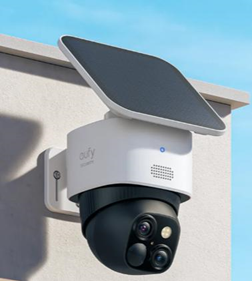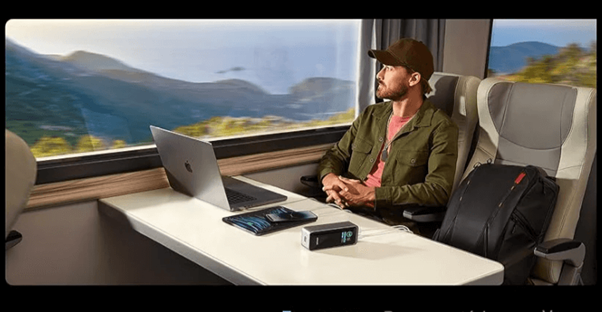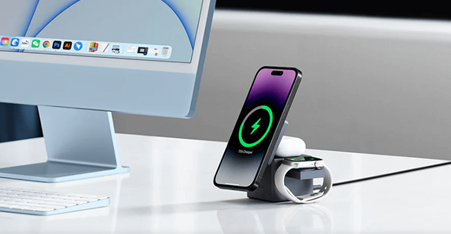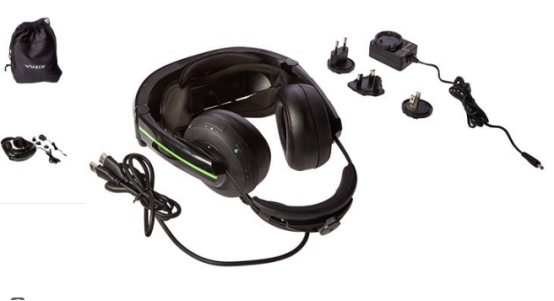Image source: The Motley Fool.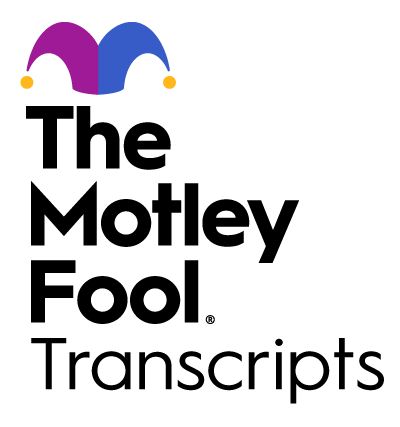
Mitek Systems(NASDAQ:MITK)Q12022 Earnings CallJan 27, 2022, 4:30 p.m. ET
Contents:
Prepared Remarks:
Operator
Good day, ladies and gentlemen. Welcome to Mitek Systems first quarter fiscal 2022 financial results conference call. Today's conference is being recorded. At this time, I'd like to turn the conference over to Todd Kehrli, MKR Group.
Please go ahead.
Todd Kehrli -- Investor Relations
Thank you, operator. Good afternoon, and welcome to Mitek's first quarter fiscal 2022 earnings conference call. With me on today's call are Mitek's CEO, Max Carnecchia; and CFO, Frank Teruel. Before I turn the call over to Max and Frank, I'd like to cover a few quick items.
This afternoon, Mitek issued a press release announcing its first quarter fiscal 2022 financial results. That release is available on the company's website at miteksystems.com. This call is being broadcast live over the Internet for all interested parties, and the webcast will be archived on the investor relations page of the company's website. I want to remind everyone that on today's call, management will discuss certain factors that are likely to influence the business going forward.
Any factors discussed today that are not historical facts, particularly comments regarding our long-term prospects and market opportunities, should be considered forward-looking statements. These forward-looking statements may include comments about the company's plans and expectations of future performance. Forward-looking statements are subject to a number of risks and uncertainties, which could cause actual results to differ materially. We encourage all of our listeners to review our SEC filings, including our most recent 10-K and 10-Q, for a complete description of these risks.
Our statements on the call today are made as of today, January 27, 2022, and the company undertakes no obligation to revise or update publicly any of the forward-looking statements contained herein, whether as a result of new information, future events, changes in expectations or otherwise. Additionally, throughout this call, we'll be discussing certain non-GAAP financial measures. Today's earnings release and the related current report on Form 8-K describe the differences between our non-GAAP and GAAP reporting and present the reconciliation between the two for the periods reported in the release. With that said, I'll now turn the call over to Mitek's CEO, Max.
Max Carnecchia -- Chief Executive Officer
Thanks, Todd. It's really nice to see you in person today, and good afternoon, everyone. Thank you for joining us today. We're off to a fast start in fiscal 2022 with our first quarter delivering very strong results.
Our digital identity verification revenue grew a strong 30% year over year as we continue to capitalize on the shift to digital and respond to our customers' needs to balance identification and fraud prevention with a smooth online customer experience. As such, we experienced record transactional volumes in identity this quarter. Whether it's verifying a loan application, authenticating travelers, using biometrics to authenticate payment, reauthenticating access of a remote workforce or verifying the identity of a new customer, the world's leading brands are using Mitek to enable trust instantly in this digital economy. The demand for digital banking also continues to yield strong growth for our deposits business, which grew 22% year over year.
All of this resulted in record first quarter revenue of $32.5 million, which was up 25% year over year; non-GAAP net income of $10.2 million or $0.22 per diluted share, up 65% year over year; and cash flow from operations of $2.3 million. The case for digital transformation has never been more urgent, and I'm honored to lead a team of global professionals who continue to make a difference for customers and consumers as they navigate this economic and social shift. Digging into each of our businesses, let's start with identity. Our continued growth at scale underscores our growing leadership in the digital identity ecosystem and the immense value we deliver to customers seeking to transform the customer experience during verification, authentication and account opening.
Access to digitally enabled services continues to increase, and this accelerating shift to digital creates an immense challenge for organizations as they strive to balance customer experience with financial risk. As the digital economy grows, so do the opportunities for fraud. And as long as criminals can cleverly exploit weaknesses and an institution's ability to distinguish a legitimate customer from an imposter, this threat will continue to increase. Digital identity verification has, therefore, moved beyond just being an enabler of digital commerce.
It now serves as an integral element of most organization's technology stack. And we believe the next decade of fraud prevention will be defined by an organization's approach to the life cycle of continuous identity and access management capabilities. Traditionally, companies have focused their energies on establishing proof of identity at the outset of a digital customer journey such as opening a new account. However, establishing trust in a person's digital identity is an ongoing process.
This quarter's increase in transaction volumes from our banking and fintech customers, in particular, is evidence of this change as the digital identity authentication is successfully being adopted throughout the digital journey. Our Mobile Verify solution, powered by multimodal biometrics, is transformational for organizations as they respond to consumer demand and establish a foundation of trust with their digital customers and protect this confidence at every touch point throughout the life cycle. Our industry-leading technology is used every day across over 80 million mobile devices around the world, and it is the strongest starting point for fighting fraud. Built on patented machine learning and computer vision algorithms, our technology provides instant feedback regarding legitimacy, authentication and liveness of the applicant or their identity document.
Liveness Detection has become an essential element of digital engagement, and regulators believe it is essential to fraud detection and prevention. This quarter, we continue to progress our efforts related to Liveness Detection and launched the Document Liveness product, ID Live Dock. ID Live Dock uses AI and builds on the same neural processing approach used in ID R&D's passive facial liveness detection product to spot document screen replay attacks in real time. Because of today's modern high-resolution video displays, it is very difficult for the human eye to distinguish between a photo replica of a document and the real document.
When this fraud is successful, it often goes undetected until other fraud signals or a fraud event triggers an audit. ID Live Dock is uniquely designed to prevent screen replay attacks from proceeding to the next step in the identity verification process, flagging potential fraud fast and early without any involvement from humans. This new product significantly enhances fraud detection capabilities, while reducing costs and latency of such analysis. And we are very excited to be the first to market with this innovation.
Accordingly, a study we conducted with PYMNTS, who is a global leader for data news and insights for the connected economy, more than half of U.S. consumers think biometric authentication methods are faster, more convenient and more trustworthy than passwords or PINs. Yet only 10% of consumers are using them today. In addition to enabling frictionless authentication and verification, the role of biometrics has never been more relevant and in line with our quest for inclusive digital participation for all.
We at Mitek pride ourselves on our innovation and commitment to negating biometric bias and are in full support of the proposed AI bill of rights. As we continue to innovate, we remain committed to exploring all avenues to achieve product superiority and expansion, whether through partnership, increased R&D innovation or acquisition. Turning now to our deposits business and our industry-leading mobile check deposit solution. The increasing use of smart devices, improved connectivity, and demand for high-end user experience are the crucial aspects that are driving digital transformation at banks and allowing banks to deliver critical services to their consumers in the form of an app.
Banks are leveraging our mobile check deposit product as a catalyst for their app adoption and increased usage. In fact, Bank of America announced last year that digital deposits accounted for 85% of transactions in one quarter, fueled by almost 48 million checks deposited that same quarter. As a result, we continue to experience growth from our highly profitable deposits product line as more and more checks are being deposited digitally. This is just another example of the rapid shift we are seeing to the digital channel.
And with that shift, the need for trust and security increases. We also look forward to incremental growth in our deposits business as we further penetrate this market opportunity with the ongoing rollout of our newest solution, Check Fraud Defender. In closing, I couldn't be more optimistic about the opportunities ahead, and our strong results validate my trust in the Mitek nation to strengthen our market position in 2022 and beyond. The growing demand for our market-leading offerings demonstrates the pivotal role our products play in providing trust in the digital economy, and we are well-positioned to take more share.
Strong growth of our innovative biometric and authentication technologies and the rise of our fraud network will incrementally add to our position as a market leader. Our globally trusted brand and the team of fraud experts remain committed to all of our customers and partners in our collective quest to fight fraud and abuse and enable trust in the digital economy. With that, I'm going to turn the call over to Frank to discuss the fiscal first quarter financial results in more detail. Following Frank's remarks, we'll open the call to questions.
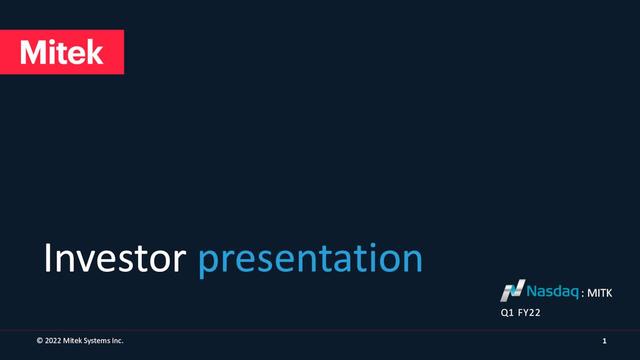
Frank, please go ahead.
Frank Teruel -- Chief Financial Officer
Thanks, Max, and thank you, Mitek nation for all of your significant contributions and another record-setting quarter. Let's start with the Q1 revenue and operating results. Mitek generated first quarter revenue of $32.5 million, a 25% increase year over year. Software and hardware revenue was $15.4 million, up 26% year over year.
The increase in software and hardware revenue is due primarily to the timing of our mobile deposit reorders. Service and other revenue, which includes transactional SaaS revenue, maintenance and consulting services, was $17 million for the quarter, an increase of 25% over Q1 last year. This increase is due to growth in transactional SaaS revenue, which increased 31% year over year to $11.6 million. For Q1 '22, deposits revenue increased 22% year over year to $19.1 million.
Identity verification revenue increased 30% year over year to $13.4 million. We delivered strong software and hardware gross margins of 98% for the quarter. Gross margins on service and other revenue was 83% for the quarter, and total gross margin for the quarter was 90%, compared to 84% in Q1 last year. Total GAAP operating expenses, including cost of revenue, were $27.6 million, compared to $24.4 million in Q1 of last year, and this increase is due to the continued investment to grow our identity business and the additional costs associated with the ID R&D acquisition.
Sales and marketing expenses for the quarter were $8.4 million, compared to $7.4 million a year ago. R&D expenses were $7.6 million, compared to $6.2 million last year, and our G&A expenses were $6 million, compared to $5.1 million a year ago. GAAP net income for the quarter increased 44% to $3.1 million or $0.07 per diluted share. Our diluted share count was 46.2 million, compared to 43.9 million shares a year ago.
As a reminder, our earnings release includes a reconciliation between GAAP and non-GAAP net income. We believe non-GAAP net income provides a useful measure of the company's operating results by excluding acquisition-related costs and expenses, stock comp expenses, litigation expenses and the related tax impact of these items. Non-GAAP net income for Q1 increased 65.1% year over year to $10.2 million or $0.22 per diluted share. Our non-GAAP adjustments include $3.1 million of stock compensation expense; $2.3 million of acquisition-related costs and expenses; $1.7 million in amortization of debt discount and issuance costs; $1.4 million in cash tax differences; and $374,000 in litigation expenses for the quarter.
This was all offset by income tax pre-tax expenses of $1.9 million. Now turning to the balance sheet. We generated $2.3 million in cash flow from operations during the quarter, bringing our total cash and investments to $218.2 million. During the quarter, we repurchased approximately 599,000 shares for $10.1 million at an average price of $0.1695 per share.
As a reminder, our board authorized a $15 million share buyback program in June of last year, which runs through June 30, 2022. In closing, we are very pleased with our results, which include record revenue for the first quarter, as well as very solid non-GAAP net income and cash flow. We look forward to continuing to deliver amazing fraud prevention services that Mitek provides for our value global customers and driving increased shareholder value for all of our stockholders. Operator, that concludes our prepared remarks.
Please open up the lines for questions.
Questions & Answers:
Operator
Thank you. [Operator instructions] We'll take our first question from Bhavan Suri with William Blair.
Bhavan Suri -- William Blair -- Analyst
Hey, Max. Hey, Frank. Congrats. Nice job there by you and the rest of the folks at Mitek.
I guess I wanted to touch a little bit to start off with, to look at the Mobile Deposit business. You've touched -- you said a little bit in the past, you have the ability to dial up ASPs a little bit. I'd love to understand a little bit of the underlying growth rates in the business because it has been sustainable, I suspect, more than people had expected. And so I'd love to understand sort of the growth rates and maybe sort of how ASPs are rising through the year and how quickly you expect that market to grow.
So some sense of sort of the underlying drivers of that market would be really helpful.
Max Carnecchia -- Chief Executive Officer
Sure thing, Bhavan. Good to hear from you, and thanks for the kind words. On the Mobile Deposit side, the three growth drivers in that business are obviously increased adoption of using mobile for check deposit; the price increases that you mentioned; and then bringing online additional capabilities like Check Fraud Defender, which, at this point, is still very nascent as we're just rolling the product out now. So really kind of coming back to those other two factors.
While we've been consistent with the price increases and getting fair value, those increases are -- they're very modest. I mean it's a couple of percent for each one of these big service providers upon when they're up for renewal and when that contract is up for renegotiation. The overwhelming majority of the growth has been just the amount of checks that are going through Mobile Deposit as opposed to ending up in branch or ATM.
Bhavan Suri -- William Blair -- Analyst
Got it. Got it. That's actually super helpful. And then I think when I look at the identity verification business, you've got some really great partnerships with companies like DocuSign, Adobe, etc.
I'd love to understand how are the partnerships progressing and sort of your go-to-market strategy and sort of getting more of those types of partnerships, where you're embedded in some of these core signature products. You've done -- I'm not really sure with account opening, things like that, but documents and sort of workflow and documents are becoming a really critical area. Just love to understand, a, how the partnership is progressing? And sort of how the go-to-market to drive more of those sorts of partnerships?
Max Carnecchia -- Chief Executive Officer
Sure thing. We're very proud of the partnerships we have and the names that you mentioned. In addition to that, we probably got another 15 major names that you'd be familiar with, the likes of Experian and other big service bureaus and credit bureaus. And that is an important part of our growth plans.
Today, approximately -- these are just approximate numbers, probably 20% of our revenue in the identity business is derived through channel partners. And we set a goal for our organization over the course of the next two years to double that. And that's not by having the direct business go down. That's by having both of these businesses increase.
And through the course of last fiscal year, we made an investment in fortifying the team. So we have a dedicated worldwide team establishing those alliances and partnerships of channel partners. So it's not just the names we're mentioning are global businesses, but they're based in the United States. If we went to Spain, if we went to Amsterdam, if we went to London, that team is working with names you would really know.
And it is a very intentional and focused approach. We're not just waiting for people to call us. We've got a list of what we think are the probably 20 most important partners. They have -- we've created something called the perfect partner profile.
And that's where that outreach is going. So more to come, but really good progress by that team so far.
Bhavan Suri -- William Blair -- Analyst
Got you. Got you. Thanks for the color. I might squeeze one more in.
This is sort of a high-level question. But you touched on sort of the idea of biometrics being easier and faster. And I'd love to understand where you think the signature piece gets replaced by that. So today, we sign all sorts of things and contracts, and you need to sign for identification, driver's license, all sorts of things.
But the biometrics, whether it's voice or facial recognition or fingerprinting or retina, whatever, strategically, how do you guys think about sort of that taking share from signature? How do you think about that world shifting and sort of this becoming a more compelling way to identify someone? I'd love to sort of think through like what the next five to 10 years drives. Or signature is just going to be part of the contract, and this is a better way to access applications and data. Just how do you parse that out as you think through the long-term trajectory here? I guess slightly tangential to your business, but critical to sort of some of the things you're investing in.
Max Carnecchia -- Chief Executive Officer
Yeah, Bhavan, we can always count on you for some thought-provoking questions. It's interesting when you think about a notary service, we're familiar with here in the United States, but what happens globally when that person comes to look at your government-issued identity document and compare it to your face in person, you're going to sign your mortgage paperwork or whatever the example is, often they do take a fingerprint, right? So there's a biometric involved there. Now it's all physical and it sits in a book and it's probably very hard to do any kind of searching and matching.
Bhavan Suri -- William Blair -- Analyst
Probably little use of it over time, but yeah.
Max Carnecchia -- Chief Executive Officer
Yeah. What we've seen -- and COVID has been a catalyst for some of this change. What we've seen over the course of the last three or four years is obviously the need to have more simple consumer transactions documented electronically. And so the idea now where you can buy a car or a lease and have that paperwork, and the car, all execute and delivered without ever having go into a dealership, that's a hot category.
There's a lot of businesses out there trying to exploit that. And depending on what state you're in, you can't do that because of the statutory requirements, right? You can't actually use something like Adobe or DocuSign to do that. But that is changing. And I think my answer to your question is, yeah, there may be signatures, electronic signatures or physical, wet signatures go away over time, it has much less to do with the technology and much more to do with the statutory changes that are required to facilitate that.
Bhavan Suri -- William Blair -- Analyst
Gotcha. Gotcha. That's helpful. The way you see digitization trend kind of drive these changes.
Appreciate the time, gentlemen. Thank you for taking my questions, and like I said, nice job, though.
Max Carnecchia -- Chief Executive Officer
Thanks, Bhavan.
Operator
We'll take our next question from Hamzah Mazari with Jefferies. Please go ahead.
Mario Cortellacci -- Jefferies -- Analyst
Hi, this is Mario Cortellacci filling in for Hamzah. Just first question is around your new ID Live Dock product. Maybe you can help size up what the addressable market is there and how big that could be over time. I think when you guys came out with your Check Fraud Defender, you kind of put some numbers around what the cost of fraud is in that market and maybe being able to win some business there on some of that cost savings.
But could you maybe perform a similar exercise for this new product?
Max Carnecchia -- Chief Executive Officer
I think we could, Mario, but it feels like we would really be guessing. I have to say this product is borne out of experimentation by the ID R&D team through the course of last summer and leading up to last summer. And when they introduced it in a beta form at Money 20/20 in the fall, the reception among folks, particularly channel partners that can embed this and just like the last caller, combine it with other things, other capabilities. It's really, the uptake and the interest has been super high.
So it wasn't the kind of thing where we started with a business plan and said, hey, this is a tens of millions of dollars a year market that can grow at a x rate. This is something that really kind of the innovation led the way, and we're kind of chasing it. We think it's material. We've already got customers that are paying us for it and they're using it in production, a handful.
So I'm not dodging your question. I don't want to just kind of off the top of my head, make something up. We just don't have good market sizing for this, but we'll keep you abreast as we continue to make progress and just a great job by the ID R&D team with this.
Mario Cortellacci -- Jefferies -- Analyst
Great. Thank you. And then just my follow-up, kind of staying on the fraud and ID side. Just in terms of your wins, where are those typically coming from? Are you taking business from any competitors? Are these customers that maybe were using some kind of in-house technology that was inefficient and yours is better? Or is it just this mostly customers that -- or white space that customers didn't have any type of product in place? Again, just trying to get a sense for where you're taking that from? And then also on the sales cycle in fraud and ID, I guess, how long is that right now? And can you -- is it months? Is it a year? And can you win something in weeks? Just any type of time frame there would be helpful.
Frank Teruel -- Chief Financial Officer
Yeah. Hey, Mario, it's Frank. I'm going to cover the first one. Max can speak a little more to the sales cycle.
It's all of the above. I mean there's folks that are new to the market, don't have really kind of sophisticated big solutions. It's folks that we're replacing because we have capabilities that they don't -- or it's new regulatory requirements that are suddenly forcing folks into a situation where they've got to increase the robustness of their identity verification services. So I think it's a very interesting space.
I think as you think of the imperatives of identity and the imperative of onboarding and how, as Max example earlier to Bhavan, a consumer transaction going online quickly, I'm buying a car, I'm getting into a loan application, a lot of it is driven by a company's kind of risk profile, how much money am I willing to put in the market without really locking down identity. So I think if you think about this space, it's really addressing all of those opportunities, companies with no solution, they're trying to do internally by themselves; companies that are being pushed into a higher degree of regulatory scrutiny by virtue of their delivery of their service or where they're located geographically. And those companies that realize that the fraud is a network fight. And as you think about the imperative and the risk associated with what they're delivering, they require all of these fraud capabilities, including authenticating that somebody is real and tying that identity to a real-world authenticated document, selfie, etc.
So we see that those things are all happening in our marketplace today. And depending on the cycle, Max can speak to it now, how much is your hair on fire tends to drive a lot of the sales cycle. But certainly, all three of those things are operative.
Max Carnecchia -- Chief Executive Officer
Yeah. And on the sales cycle, there's not a one-size-fits-all. The previous caller talked a little bit about some of our channel and partnerships. And those sales cycles can be very quick because the capabilities are embedded in a broader application.
When we're in a direct selling mode, sales cycles are typically counted in quarters, and it's very quick to be able to get Mitek identity stood up. The implementation is broader than just tilting up the identity verification part for an onboarding journey. So if you think about somebody opening a new account or applying for a credit card, particularly in a bank, a large financial institution, even a large fintech, those are regulated entities. And they have compliance and legal teams that are monitoring, making sure that these things are being done the appropriate way.
And so an implementation cycle end-to-end could literally be two, three, four quarters. So it varies. It can be super short in some cases. In other cases, it could be years.
Mario Cortellacci -- Jefferies -- Analyst
Great. And I just have one more. And this is a question I received from an investor recently, and I would love to hear your take on it. Just on the lawsuits with -- on the check deposit side with some of your customers.
I guess there was just some pushback on the ability to sell new products like Check Fraud Defender to those customers because maybe potentially for a lack of a better term, they could be salty because they have a liability to potentially worry about now we're down the road. I would love to hear your take on your ability to sell to those existing customers any new and incremental products.
Max Carnecchia -- Chief Executive Officer
Yeah. So that's the first time I'm hearing of that. We have had none of that in our experience, whether that's with the conventional products we bring to banks for mobile check deposit or whether it's Check Fraud Defender. As a reminder, the two lawsuits that are out there relative to this area do not involve directly Mitek in any way.
And we have had no customers that have reduced their usage or push back on us relative to adoption of whether Check Fraud Defender or mobile check deposit, as a result of USAA's actions with the broader financial community about remote banking.
Mario Cortellacci -- Jefferies -- Analyst
Great. Thank you so much.
Max Carnecchia -- Chief Executive Officer
Thanks, Mario.
Operator
We'll take our next question from Mike Grondahl with Northland Securities. Please go ahead.
Mike Grondahl -- Northland Securities -- Analyst
Thanks, guys. If you could maybe just help a little bit, the 30% growth in mobile ID, dissect that a little bit. I assume that probably transactions mostly, maybe a little bit more penetration in existing accounts, maybe some new wins, I don't know. Is pricing up a little there, down a little there? Maybe just help us think through that 30% growth a little?
Frank Teruel -- Chief Financial Officer
Yeah. Hey, Mike, it's Frank. Actually, again, like Mario's question, all of the above, we're seeing it. As we mentioned in the release and in the talk track, transaction revenue, SaaS transaction revenues are up, which is encouraging.
It definitely is an expansion in new logo opportunity as well. So on all of those metrics that matter, all of them were operative in driving that number for this quarter.
Mike Grondahl -- Northland Securities -- Analyst
And maybe a little bit more there, Frank. But I know you're getting positive price adjustments in mobile check. Are you getting that in ID? Or are you giving up a little bit of price?
Max Carnecchia -- Chief Executive Officer
Yeah, Mike, the markets are so -- those product lines in the markets and what they're addressing are so completely different. I don't think it's fair to make the comparison. In the identity space, the price that we get on a per transaction basis has more to do with the value that the use case of the value that customers involved in. And that can -- that varies by geography.
That varies by whether it's a gig economy company or whether it's a more traditional large financial institution, I think our trends on pricing and identity are pretty much what they've been for the last year.
Mike Grondahl -- Northland Securities -- Analyst
Got it. Got it. And maybe Check Fraud Defender, did you have any revenue in the December quarter?
Max Carnecchia -- Chief Executive Officer
Yeah. So we had -- it was pretty nominal revenue. Just as a reminder for everybody who's maybe out there that wasn't with us through the summer, we announced the introduction of the product back in June. And we've been working with some of our, let's call them, charter member of the network to build out that product.
The revenues that you'll see relative to Check Fraud Defender, while they're nominal, are really more around implementation support professional services. And we're anticipating we'll start to see some transaction-related revenue either in the quarter that we're in now, Q2 or Q3.
Mike Grondahl -- Northland Securities -- Analyst
Got it. March or June, OK. And then the press release noted $218 million of cash. Have you guys been still kind of actively aggressively looking at acquisitions? Are you spending a lot of time there?
Max Carnecchia -- Chief Executive Officer
Yeah.
Frank Teruel -- Chief Financial Officer
Yeah. We are. And Mike, it's front of mind. We're looking at -- constantly looking for opportunities, and we're deeply involved in vetting those things.
So yes.
Mike Grondahl -- Northland Securities -- Analyst
Got it. OK. Thanks, guys.
Frank Teruel -- Chief Financial Officer
Appreciate it. Good to hear from you, Mike.
Operator
[Operator instructions] We'll take our next question from Allen Klee with Maxim Group. Please go ahead.
Allen Klee -- Maxim Group -- Analyst
Good afternoon. The IRS announced that they are going to soon require a selfie to access some of their online tools and applications. Can you disclose if that's you guys they're using?
Max Carnecchia -- Chief Executive Officer
Yeah. So Allen, we don't -- we try not to -- we respect the confidentiality agreements we have with our customers. I will remind you that government has not been an area of focus for us, so you can draw your own conclusion there.
Allen Klee -- Maxim Group -- Analyst
OK. And then could you break out your deposit software by -- your deposit revenues by software versus service?
Frank Teruel -- Chief Financial Officer
Yeah. Allen, it's Frank. Apologies. The phone had a problem.
Yeah, we don't really tend to do that. It's interesting that we had good growth in that business. It was largely driven on Mobile Deposit volume as you think about it. And so don't break it out in detail, but I think a 20% growth indicative of just volume increases and the timing of orders.
Allen Klee -- Maxim Group -- Analyst
And for the identity business, how did the revenue breakout for like the newer stuff versus the legacy?
Frank Teruel -- Chief Financial Officer
Yeah. Again, I think it's -- as I mentioned earlier and in an answer, I think, really, if you look at identity, the growth was driven by new logos that came on board, expansion within existing accounts. So you kind of look at that. It's really not -- we don't really peg it to a particular feature, a new product.
But overall, the identity business grew nicely and the transactional SaaS revenue was up significantly, which is a good indicator for us.
Allen Klee -- Maxim Group -- Analyst
OK. And what was your total depreciation and amortization expense for the quarter?
Frank Teruel -- Chief Financial Officer
Yeah. We run around $320,000, like that a quarter. So we're consistent with prior quarters.
Allen Klee -- Maxim Group -- Analyst
OK. Thank you so much.
Frank Teruel -- Chief Financial Officer
Thanks, Allen.
Operator
We'll take our next question from Scott Buck with H.C. Wainwright. Please go ahead.
Scott Buck -- H.C. Wainwright -- Analyst
Hi. Good afternoon, guys. Just a quick follow-up to Mike's question. On the M&A front, what's the -- what are you prioritizing there? Should we expect kind of bolt-on deals or transactions similar to the ID R&D deal? What are you looking at?
Max Carnecchia -- Chief Executive Officer
Yes. We're definitely looking for things that will expand our capabilities, so logical adjacent kinds of capabilities that we can see that our customers need or are going to need. So very similar to ID R&D. And I'm not going to kind of review the categories just because we don't want to tip the hand too much.
But it's more around having the scope of capabilities than trying to have more scale with things that we already do or any kind of consolidation.
Scott Buck -- H.C. Wainwright -- Analyst
OK. That's helpful color. And second, I was hoping you might be able to kind of give us an update on where we are in terms of kind of path to profitability on the ID verification business? And then how you balance investment growth and --
Frank Teruel -- Chief Financial Officer
Yeah. Scott, great question. It's Frank. I mean we've been saying now, we think that toward the end of '23, fiscal '23, we're there.
And we still see that kind of glide path. So as you can see, the identity business as a percentage of revenue is growing, which is great. So yeah, we continue to drive the business toward the end of fiscal '23 as the kind of pivot point for profitability.
Scott Buck -- H.C. Wainwright -- Analyst
Great. That's really helpful, Frank. And then last one for me. Just to get there, what do you need in terms of investment in the business? Are we going to see a substantial uptick in some of the opex from these levels? Or should it be pretty consistent from here on out?
Frank Teruel -- Chief Financial Officer
Yes, it's -- not at all, pretty consistent. We've built the plan. We've baked in prudent growth in areas of investments. So you're not going to see an uptick on opex to drive -- to pour gasoline on the fire, if you will.
So we're on a glide path. We're seeing it back into fiscal '23, and it won't affect -- we've planned our opex. It won't incrementally affect our opex.
Scott Buck -- H.C. Wainwright -- Analyst
Perfect. I appreciate the time this afternoon, guys. Thanks a lot.
Frank Teruel -- Chief Financial Officer
Thanks, Scott.
Operator
Ladies and gentlemen, this concludes today's question-and-answer session. At this time, I'd like to turn the conference back to the company for any additional or closing remarks.
Todd Kehrli -- Investor Relations
Thank you, operator, and thank you, everyone, for joining us today. We look forward to updating you again next quarter. Our call has concluded. Have a wonderful day.
Operator
[Operator signoff]
Duration: 37 minutes
Call participants:
Todd Kehrli -- Investor Relations
Max Carnecchia -- Chief Executive Officer
Frank Teruel -- Chief Financial Officer
Bhavan Suri -- William Blair -- Analyst
Mario Cortellacci -- Jefferies -- Analyst
Mike Grondahl -- Northland Securities -- Analyst
Allen Klee -- Maxim Group -- Analyst
Scott Buck -- H.C. Wainwright -- Analyst
More MITK analysis
All earnings call transcripts

